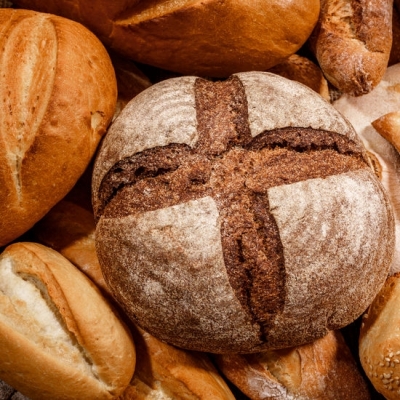
Bread Scoring
What is Bread Scoring?
Bread scoring of proofed dough pieces is the final step prior to baking. Scoring creates an incision on the skin/surface of the dough, and can have a direct impact on overall appearance of the bread loaf.1
In small scale production, this process is done manually with sharp metallic blades (lames in French), while water jets are used in large scale scoring.
Origin
The origin of scoring dates back to the 19th century, when a French scientist named Vaudry mentioned “breads with cuts on their surface” as an artful and science-grounded step for successful baking operations. Vaudry described these cuts as an improvement in the appearance of bread.
Historically, scored breads were baked only for wealthy families and famous restaurants in Paris. Bread scoring was also relevant in setting prices and standards for identity and weight. It was considered a distinctive trademark that allows tracking of baked goods made by a specific baker.1
Why score bread dough?
There are three reasons to score bread dough:1,2
- Overall aesthetics of bread loaves: bakers can score bread in different ways to improve appearance.
- Dough structure: surface incisions create weak points in the dough skin thus reducing its tenacity or strength (i.e. resistance to expansion) especially for high protein flours. Scored doughs expand more during oven spring.
- Yeast activity: scoring creates paths for carbon dioxide gas to escape when the pressure inside the dough becomes too high during oven spring. Different scoring techniques can lead to variations in bread expansion and therefore its final appearance.
Application
Bread scoring should be performed with a straight or curved razor blade. It should be made with a firm, smooth, quick movement. Optimal cuts should be between 6 to 12 mm thick.2 Scoring methods differ with the type of bread being baked:
- Round loaves should have cuts that spread evenly across the loaf and open quickly. Hold the knife vertically, around 90 degrees to the loaf surface.
- Long loaves (batard- or baguette-type) should be scored parallel to the length of the loaf, with a shallower cut than round breads. Hold the knife at around a 30 degree angle (also known as a lip or ear cut) along the loaf surface.
Bread scoring in wholesale operations
In high-speed production plants, mechanical scoring is done using a very fine, focused stream of water. The cut expands and opens as the loaf bakes. Timing is critical to ensure even distribution of the cuts. Scoring of dough is difficult if the dough does not have good tolerance.
Water scoring can be achieved by nozzles coupled with pressurized water. Advantage of this method include the ability to score large quantities in a short period of time. In addition, the food safety aspect of water scoring is better due to the elimination of metal knife blades. One disadvantage of this method is the lack of versatility in the design of scores.
Possible adjustments and controls in automatic bread scoring using water jets include:
- Varying height of water nozzle, i.e. the distance from application point to product surface. If too long, incomplete scoring may result, thus requiring increase in water pressure at nozzles.
- Water pressure
- Hardness of water. If too hard, i.e. high levels of calcium and/or magnesium salts, clogging of nozzles may ensue.
- Timing for splitting. As soon as the front of the pan is detected by sensors in the line’s conveyor, the water jets should engage.
Quality considerations
Scoring must be adapted to fit the dough characteristics at the end of final proofing. For overproofed dough, scoring should be shallow to avoid deflation or degassing effect. Underproofed doughs, however, can benefit from deeper scoring to help create better expansion during oven spring to provide compensation for lack of volume.1,2
The method of scoring can also impact loaf surface. Transversal cuts result in loaves with round cross section, whereas parallel cuts create flatter cross section.1,2
Food safety considerations
As a part of the production process, bread scoring should be part of the HACCP plan and need to be properly addressed in pre-requisite programs such as allergen changeover, hygienic design, maintenance (if automatic scoring equipment is used) and cleaning program.
References
- Suas, M. Advanced Bread and Pastry: A Professional Approach, Delmar Cengage Learning, 2009.
- Hamelman, J. Bread: A Baker’s Book of Techniques and Recipes, 2nd edition, John Wiley & Sons, Inc., Hoboken, New Jersey, 2013.

